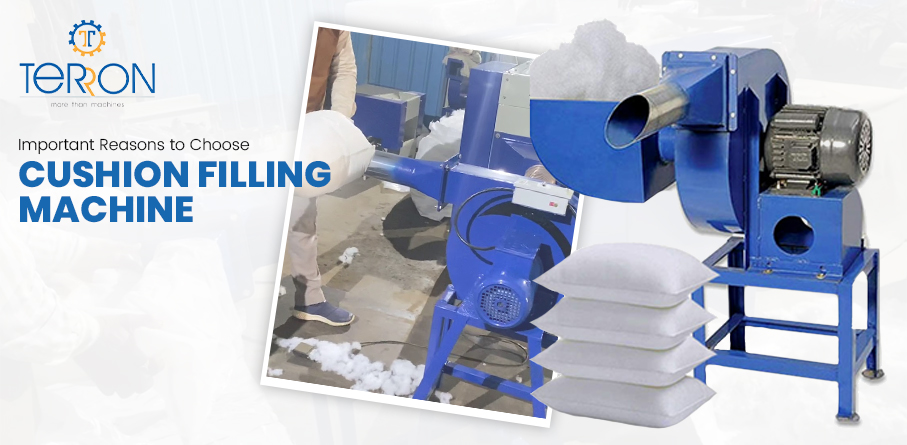To stay ahead of the curve in the modern world productivity and efficiency are more crucial than ever for organisation. Having the right equipment is more crucial than ever for sectors that manufacture and package cushions in order to maximise productivity. The cushion filling machine is one of the most crucial equipment in this regard. The method used to pack cushions in India and other countries has undergone a full transformation.
What is a Cushion Filling Machine?
A specialised piece of equipment called a cushion filling machine is used to automate the process of stuffing cushions with different filling materials, such as foam, polyester fibre, or feathers. By accurately measuring and dispensing the necessary amount of filling material into the cushions, these devices guarantee reliable and uniform results. Cushion filling machines are flexible and adaptable to various production needs because of the multiple configurations available to handle different cushion sizes, shapes, and filling materials.
Benefits of Cushion Filling Equipment
Cushion filling machines come with a number of benefits that producers can greatly benefit from while producing cushions.
Some of the main benefits are as follows:
- Increased Production Efficiency: The enormous increase in production efficiency is one of the most important benefits of employing a cushion filling machine. These machines can handle a lot of cushions in a short amount of time by automating the filling process. This effectiveness not only lowers labour costs but also enables firms to fulfil increased production needs without sacrificing the quality of the final product.
- Consistent Filling: Hand-filling cushions can result in variances in the amount of filler material utilised, which can change how the cushion feels and feels to touch. Contrarily, cushion filling machines guarantee accurate measurements and uniform filling material distribution, producing dependably high-quality cushions. Customer satisfaction is increased and the brand’s reputation for dependability is strengthened by this consistency.
- Time and Cost Savings: Investing in a cushion filling machine can lead to significant long-term cost savings. By automating the filling process, manufacturers can reduce the need for manual labor, cutting down on wage expenses. Additionally, the reduction in material wastage due to precise measurements further contributes to cost savings. Saved time and resources can be redirected to other aspects of production process, such as marketing or product development.
- Versatility in Filling Materials: Cushions come in a variety of sizes and forms, and different consumers may choose different sorts of stuffing materials. Foam, polyester fibre, feathers, and a variety of other filling materials can all be worked with by cushion filling machines. Manufacturers don’t need to spend money on specialised equipment for each form of filling in order to accommodate a wide range of client preferences.
- Improved Ergonomics and Worker Safety: Hand-filling cushions can be a strenuous task that might result in aches and pains for the workers. By implementing a cushion filling machine, manufacturers can improve ergonomics at the workplace and worker safety. These devices promote a healthier workplace by decreasing physical effort and repeated movements, which helps to minimise injuries.
- Options for Customization: Many cushion filling machines feature programmable settings that allow manufacturers to alter the density and softness of the filling to satisfy consumer preferences. With the aid of this feature, businesses may provide bespoke pillows that are created for the special needs and preferences of their target market.
Conclusion
Cushion filling machines have become crucial equipment for manufacturers as the demand for high-quality cushions keeps rising. These machines are a smart investment for companies in the cushion industry due to their benefits, which include improved production efficiency, consistent filling quality, time and cost savings, and diversity in filling materials. Additionally, by offering customization, producers may maintain their competitive edge in the market and further increase consumer satisfaction.
